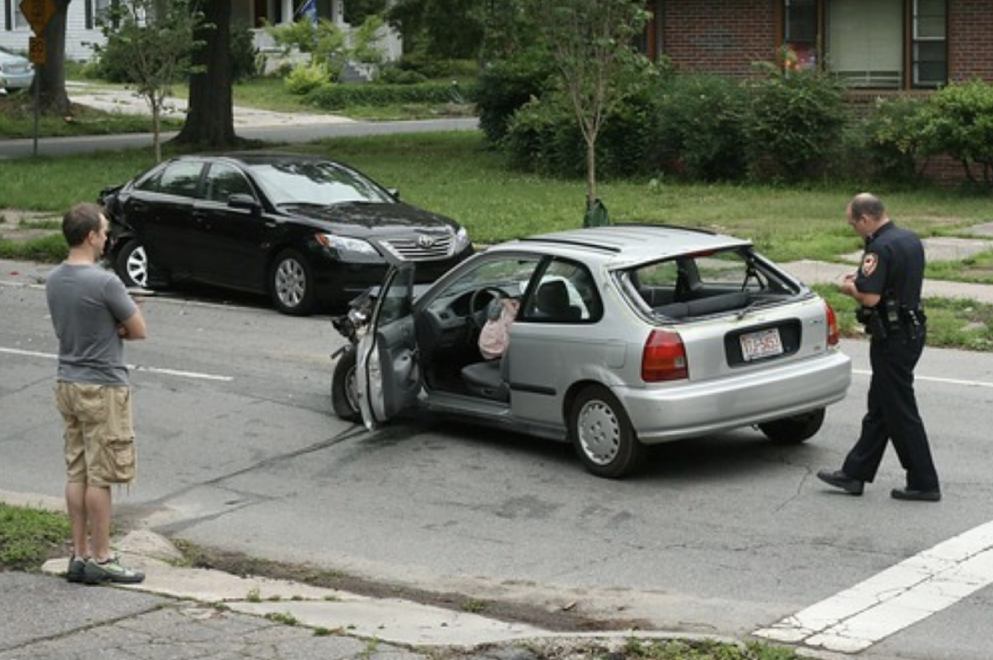When a driver hits something or someone with their vehicle and the leaves instead of remaining at the scene of the accident, it’s considered a hit-and-run. Typically, these types of accidents involve a pedestrian, another vehicle, or a fixed object, with the offender leaving the scene without leaving any identification or offering assistance. This violation may result in a fine, jail time, or a combination of the two.
If you’ve been hit by a driver who left the scene of an accident, it can be a scary situation, especially if you’ve been injured or had extensive property damage. Since all states have their own laws, use this guide to learn more about Maine’s hit-and-run laws.
Why Do People Leave the Scene of a Hit-and-Run Accident?

In Maine, if anyone is injured or killed in an accident or if there’s property damage of more than $1,000, the driver must immediately notify the police. However, there are many reasons why a driver might leave the scene of a hit-and-run accident, including:
- The driver was operating the vehicle without a license.
- The driver was operating the vehicle with an expired, suspended, or otherwise invalid license.
- The driver was intoxicated.
- The driver didn’t have insurance.
- The driver was confused or suffered a medical issue.
- The driver was trying to avoid liability and didn’t want to be found.
- The driver was afraid of confrontation.
- The driver was in shock after the accident.
Some of these reasons, including driving with an invalid license or without a license at all, may incur additional fines and punishments.
What Are the Types of Hit-and-Run Laws in Maine?
In Maine, there are several types of crimes associated with hit-and-run accidents.
- Class E Hit-and-Run: This type of hit-and-run causes only minor property damage, such as damage to another vehicle. Hitting a vehicle in a parking lot, causing damage, and then leaving the scene is a misdemeanor if you leave without providing contact information. This carries a maximum fine of up to $1,000 and/or a jail sentence of up to 180 days.
- Class D Hit-and-Run: If the accident causes serious injury or death, it is considered a felony with reckless driving or vehicular homicide. It carries a maximum penalty of 12 months in jail, a fine up to $2,000, and 90 days of a suspended license.
- Class C Hit-and-Run: If the driver is believed to have caused the accident intentionally due to reckless driving or because he or she was under the influence of drugs or alcohol, the driver can be punished with a jail sentence up to five years, a maximum of a $5,000 fine, and 90 days of a suspended license.
In addition to criminal penalties, hit-and-run drivers in Maine might also face civil penalties. The accident victim or loved ones of the victim might pursue these civil penalties for harm suffered, including the following:
- Pain and suffering.
- Medical bills.
- Lost wages.
- Property damage.
Although Maine courts typically don’t award punitive damages, some victims might be entitled to these damages where the driver engaged in intentional malice. The difficulty with these cases is trying to locate the negligent driver. This can cause a delay in the financial recovery and getting proper care.
What Do You Do If You’ve Been the Victim of a Hit-and-Run?
If you’re a victim of a hit-and-run accident in Maine, it’s imperative to follow these steps:
- Contact the police immediately to document the incident. In Maine, failing to contact the authorities about a reportable accident is a crime, and you could receive a punishment of up to six months in jail. Call the police to file an official report as soon as possible. The same punishment is applicable if you give a reporting officer an incorrect name or address, so provide as many relevant and accurate details of the accident as you can.
- Obtain the police report. According to Maine law, if bodily injuries or death occur or damages to the vehicles or property exceed more than $1,000, the police must file a report for the official record. An official police report is vital to ensuring your insurance company has the most accurate information.
- Take photos and record videos of the damage or personal injury. This gives you additional proof of the accident that can make the difference between a successful or unsuccessful insurance claim. These images can remind you of details you may have forgotten when contacting the insurance company or can be used as evidence if the case goes to court.
- Contact your insurance company regarding the incident. The statute of limitations — or state-designated time limit — doesn’t apply to car insurance claims, but most insurance companies require you to submit a claim within a reasonable timeframe, which is usually between a few days or weeks. You may be asked to call an appraiser, who could evaluate the property or automobile damage and provide a monetary value of the damage that you can then report to the police.
- Find a lawyer to help you. Each state has a statute of limitations to bring your vehicle accident case to court. Maine’s statute of limitations is one of the most generous in the country, giving you six years from the date of the accident to turn to the state’s civil court regarding personal injury or property damage liabilities. However, wrongful death lawsuits must be filed in Maine no later than two years after the deceased person’s death.
Hiring a Personal Injury Lawyer After a Hit-and-Run Accident
If you or a loved one has been involved in an accident in which the other driver left the scene, Berman & Simmons can help. We will answer your questions, explain all your legal options for a hit-and-run lawsuit, and provide a roadmap for what comes next.
Contact us today to schedule a free consultation.
